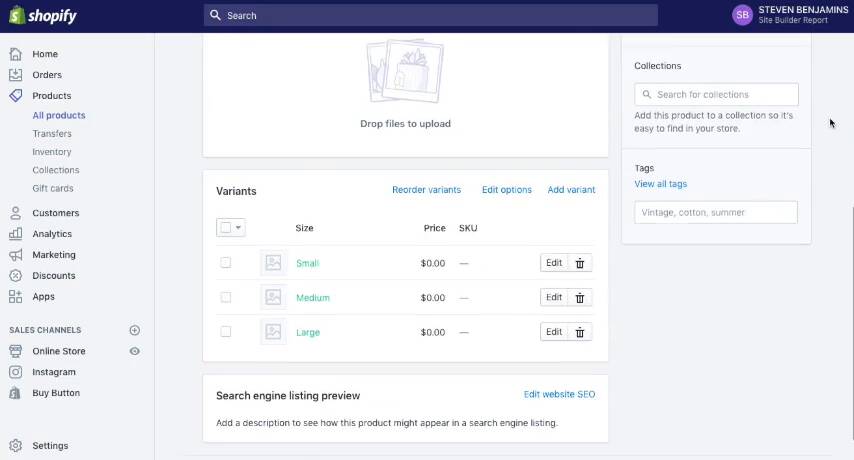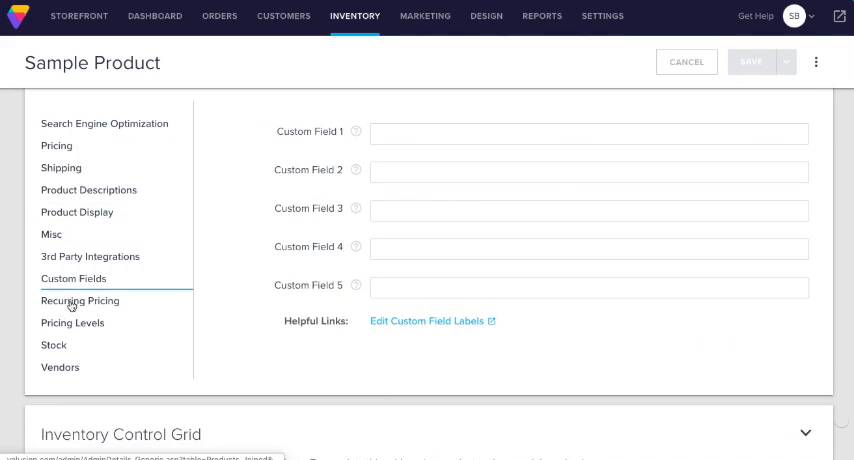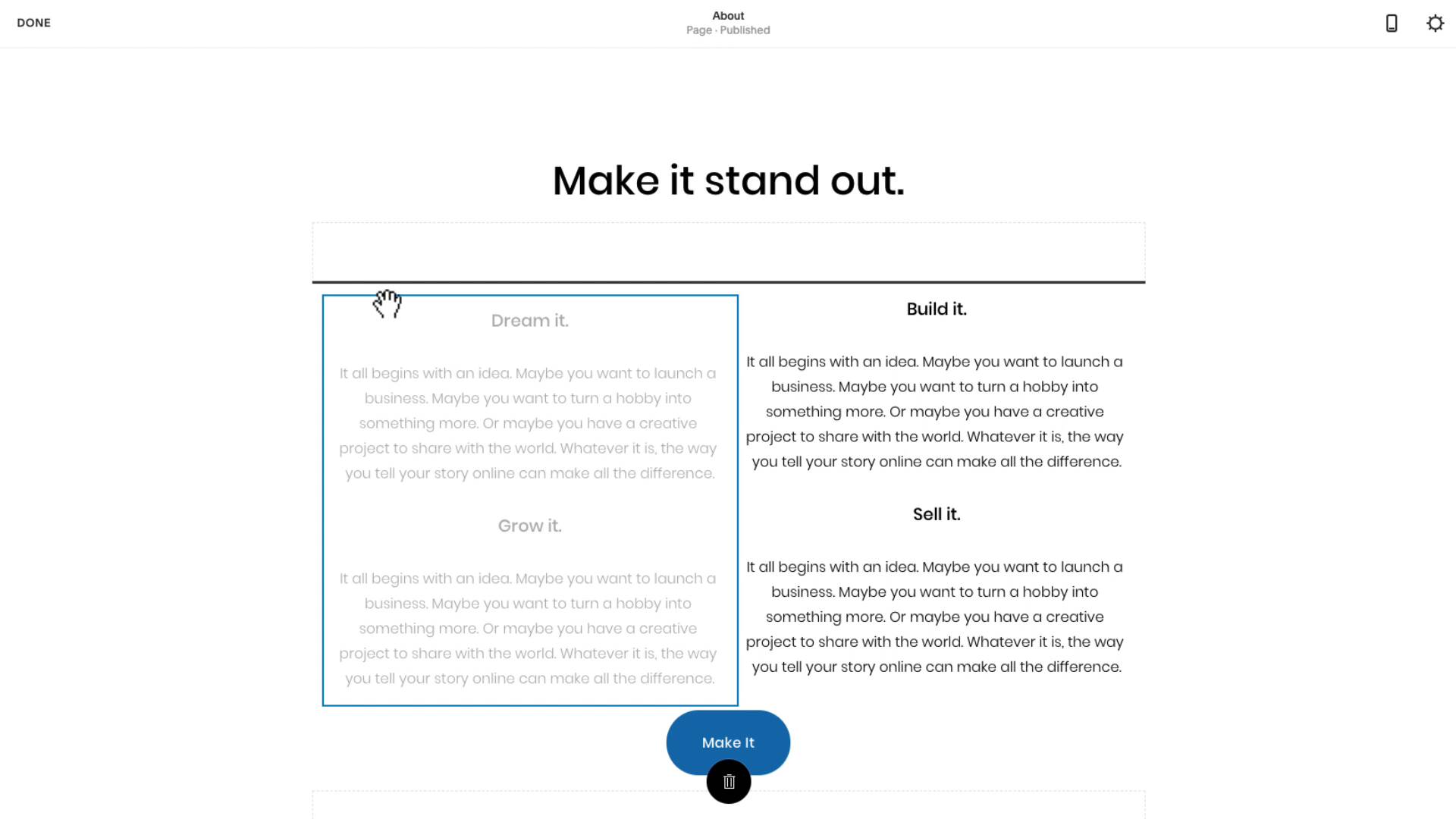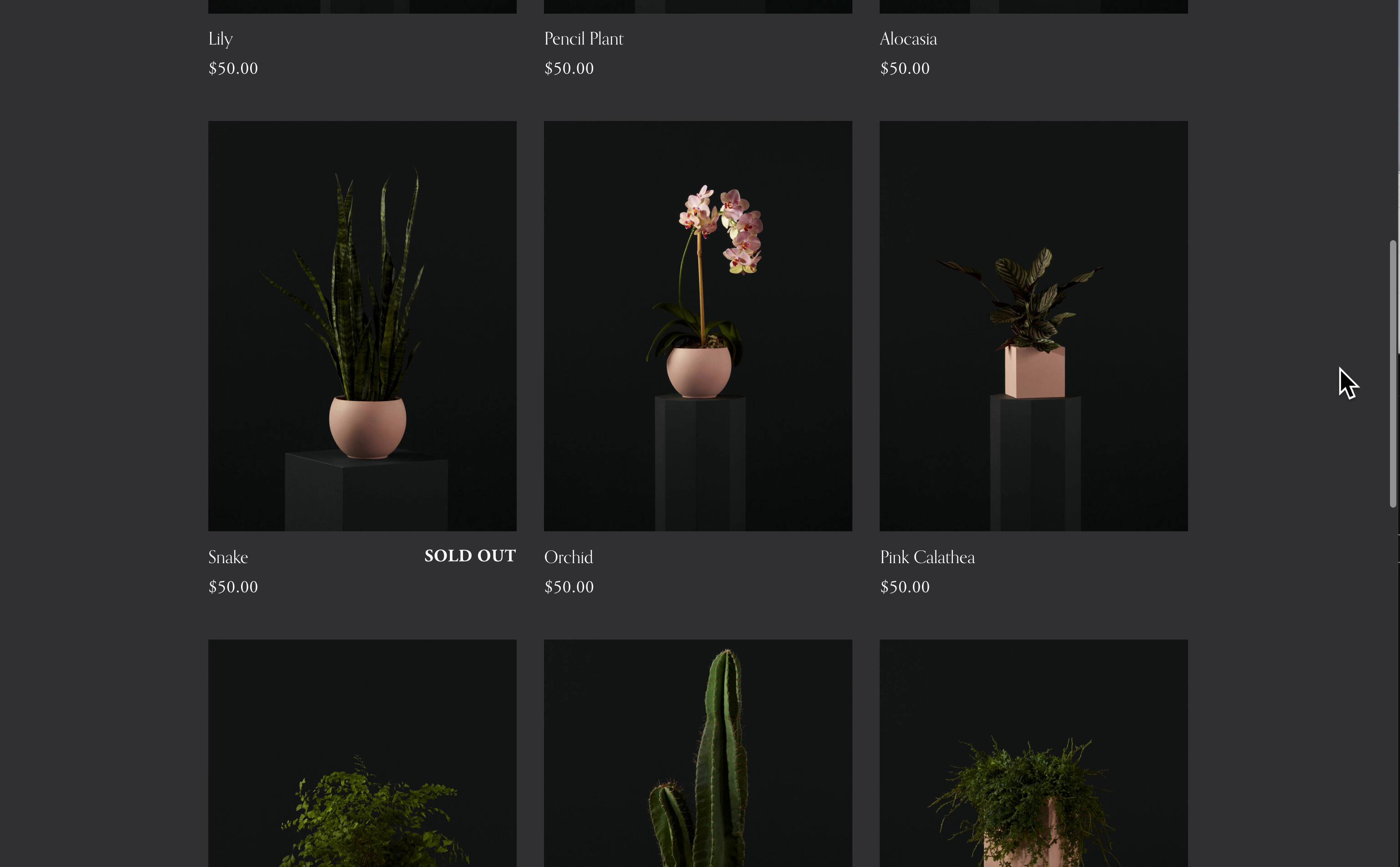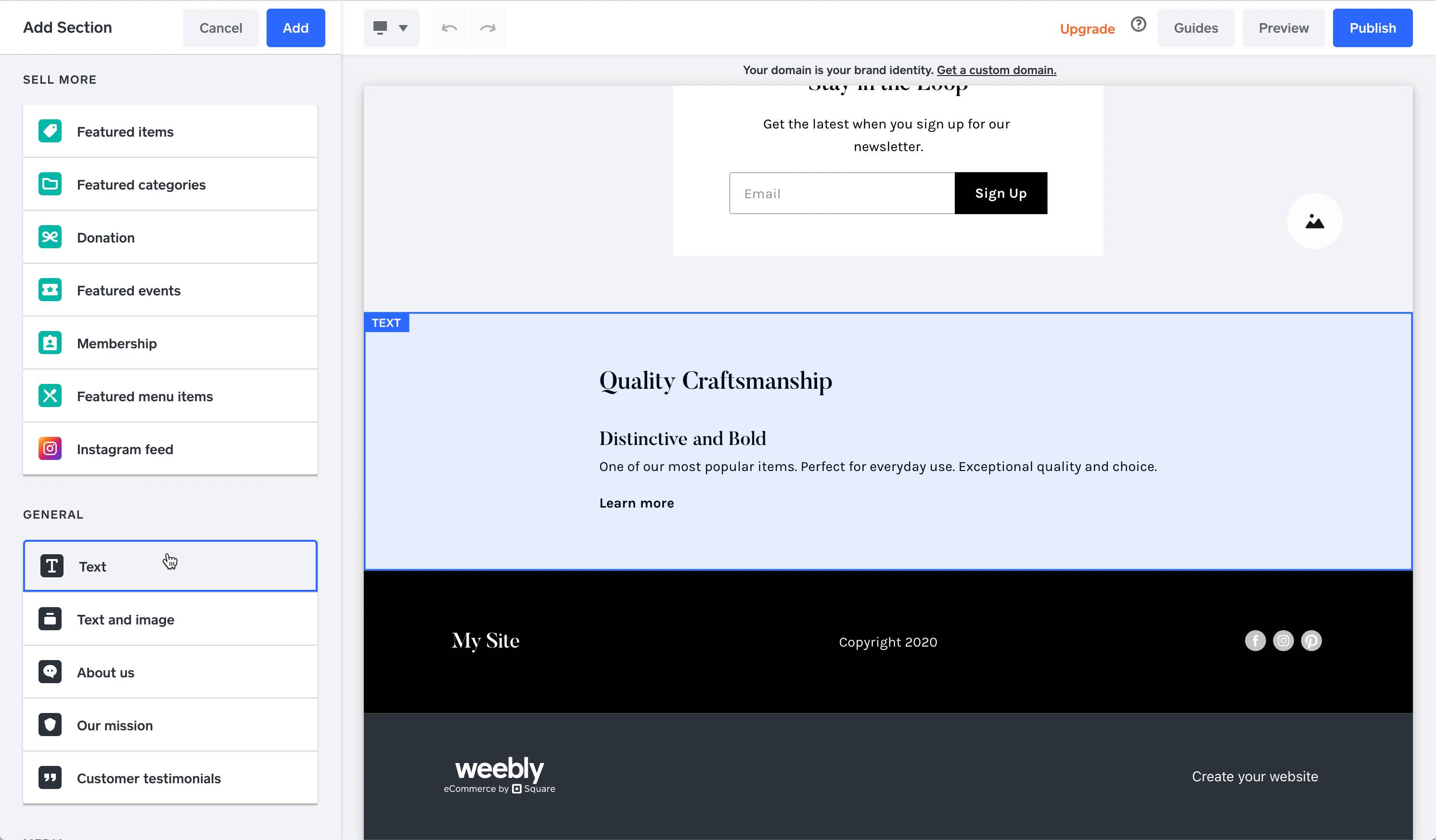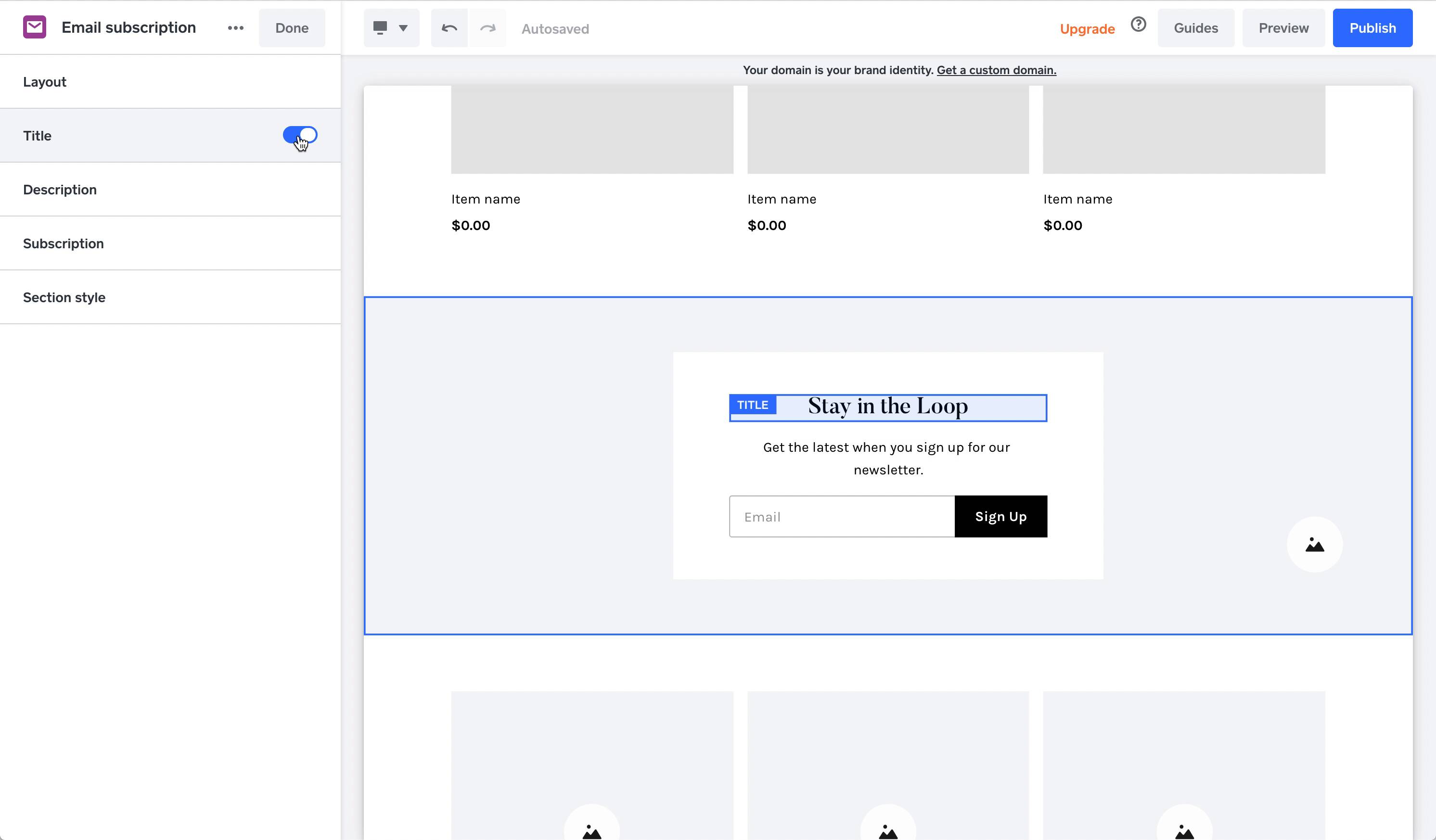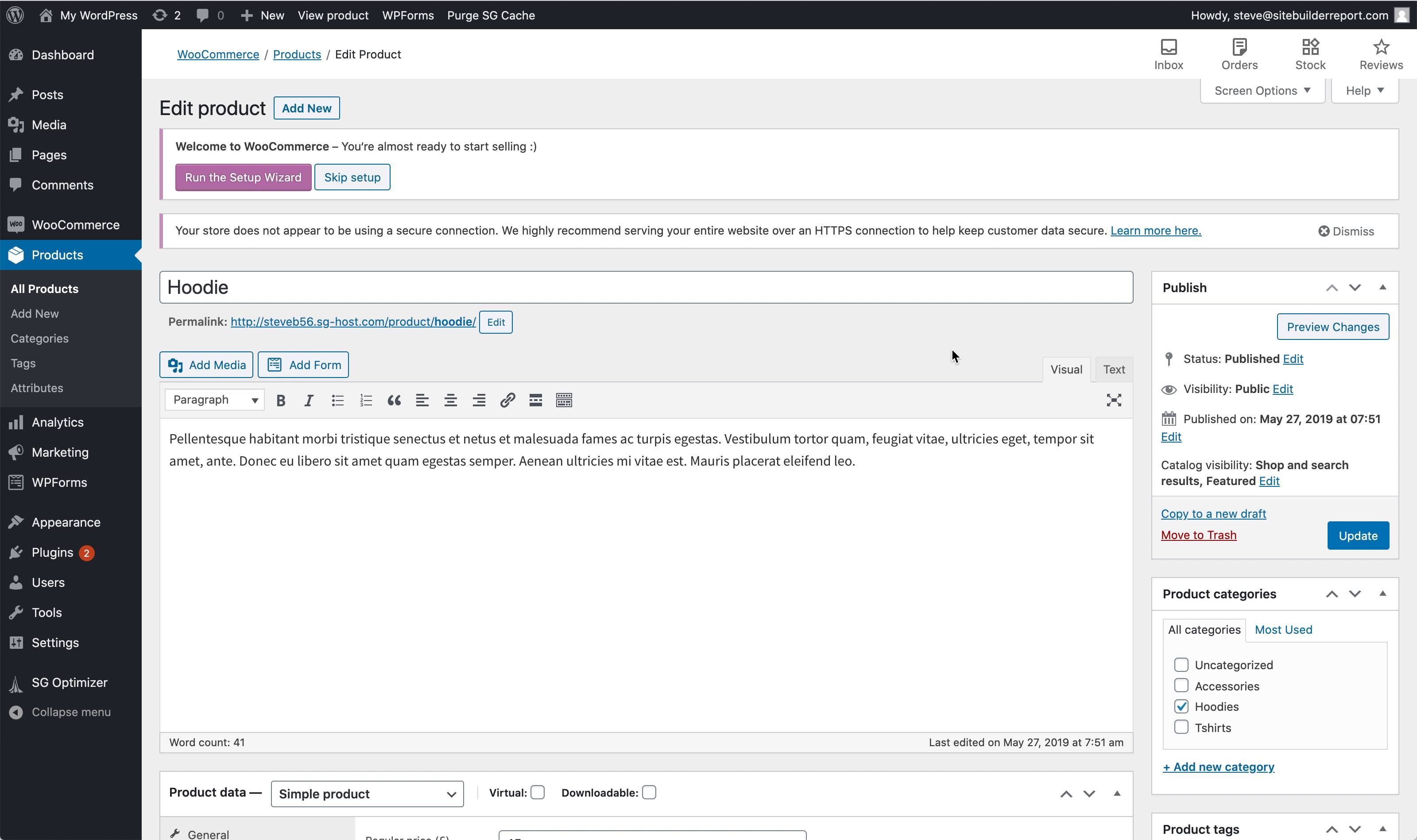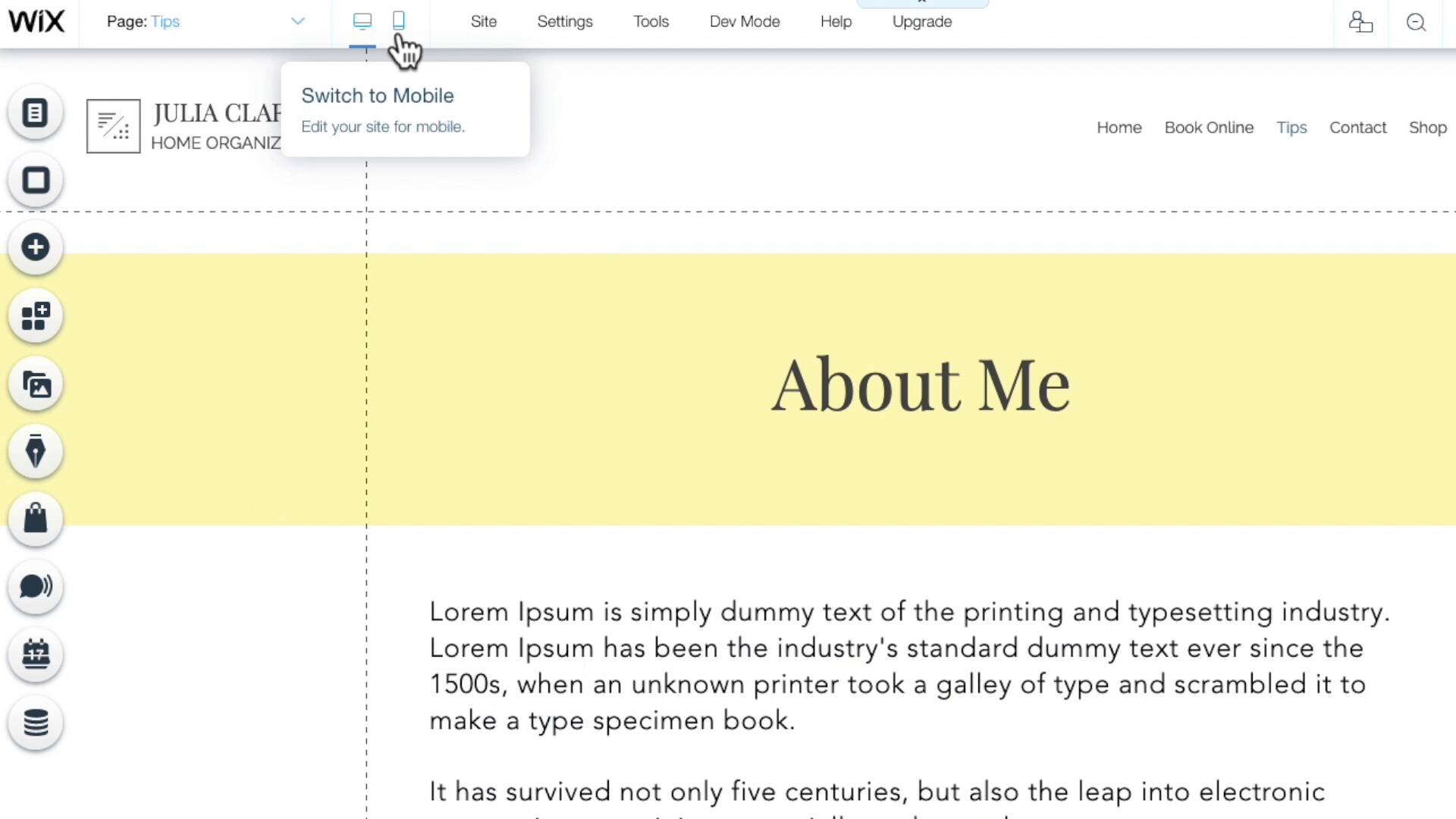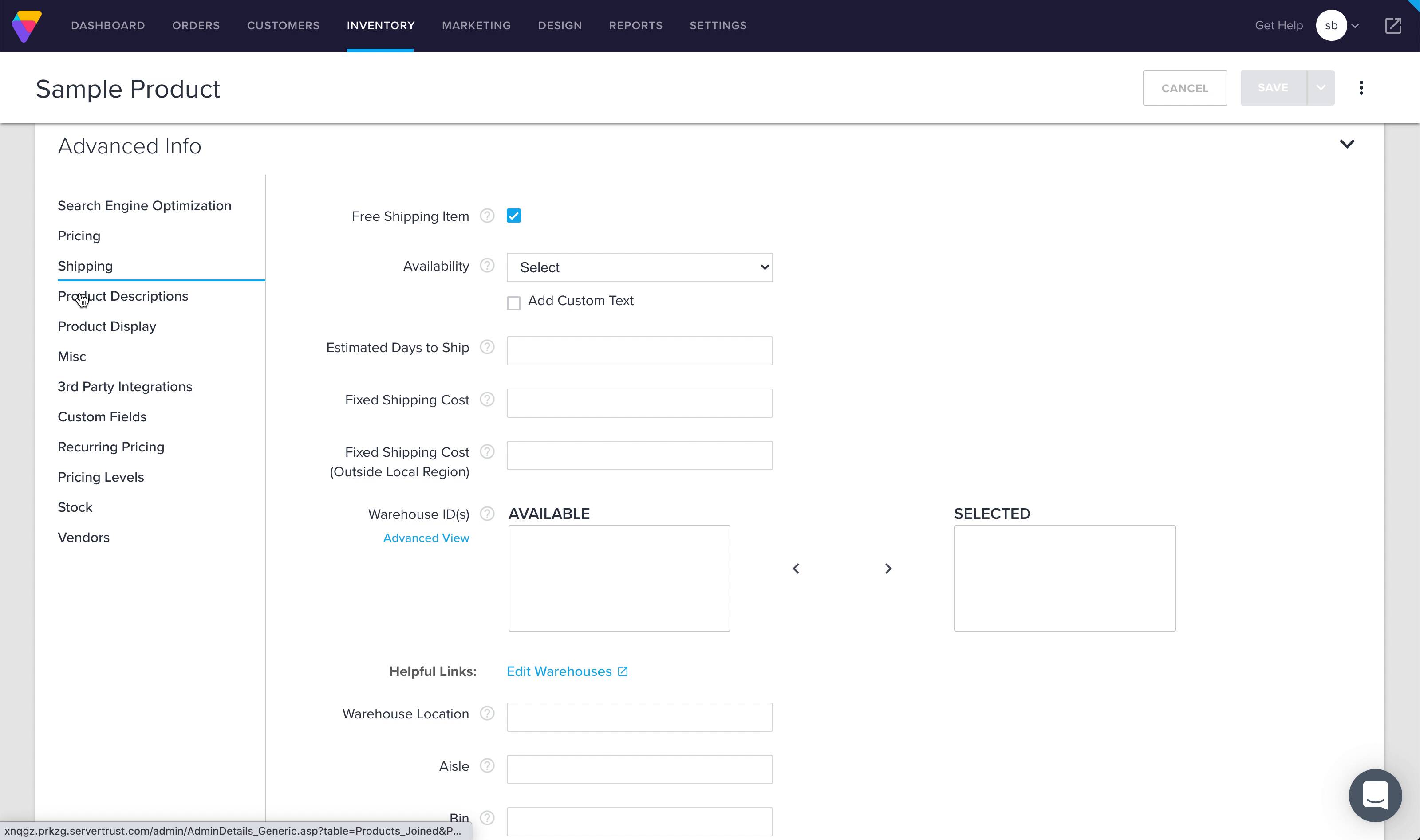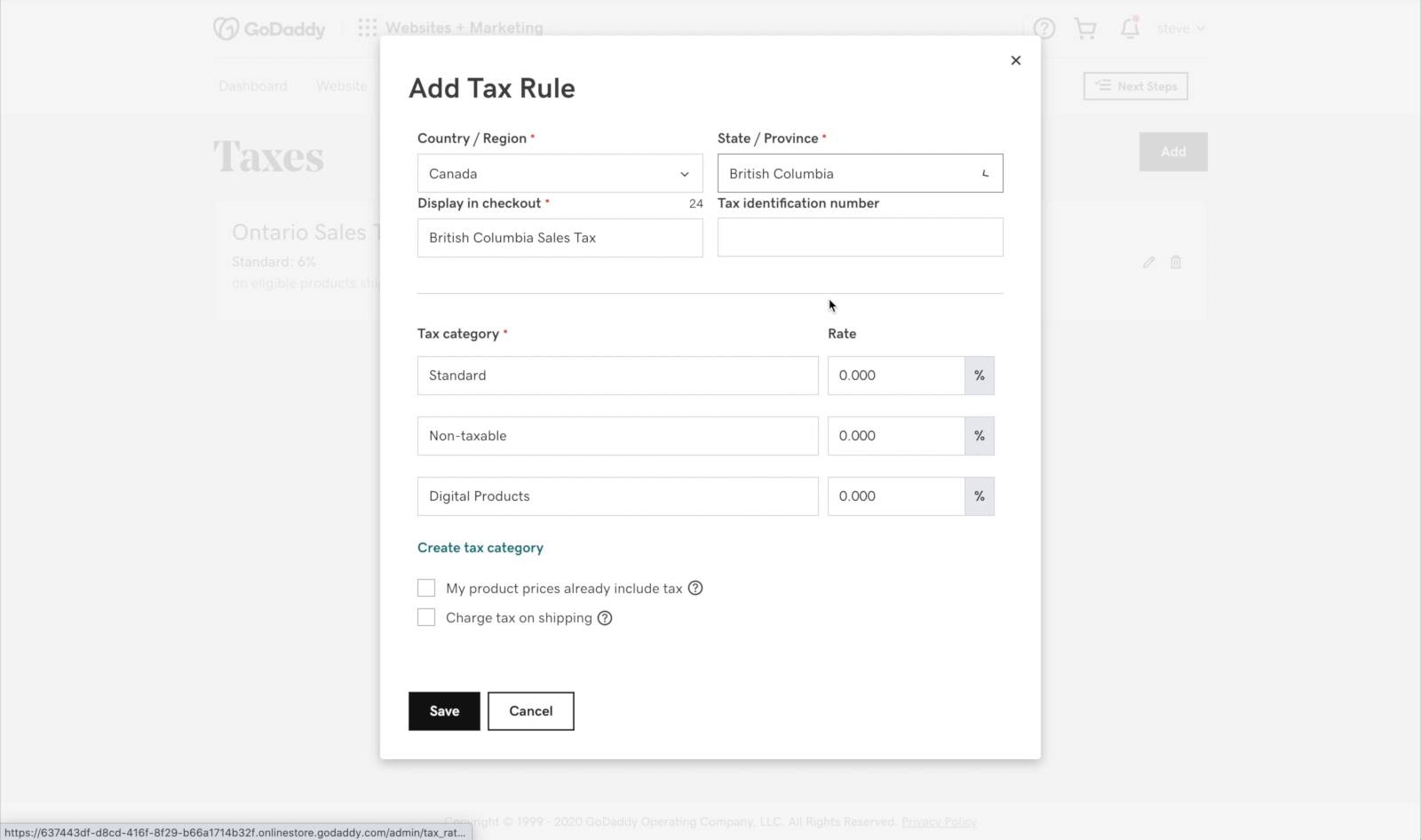Best Website Builder
I test every website builder so you don’t have to. These are my rankings of the best website builders in 2025.
Our work is supported by affiliate commissions. Learn More
Our work is supported by affiliate commissions. Learn More
The pandemic changed ecommerce. All of a sudden retailers had to figure out curbside pickup and restaurants had to figure out the world of food delivery. Things are moving fast and the best ecommerce website builders are adapting to this changing world.
This is my guide to the best website builders for an online store. Shopify and Squarespace are the best overall but that doesn’t necessarily mean they are the right choice for 100% of stores. There are big differences between the top tools and it’s always best to match the tool to fit your requirements. Let’s dive into it!
Best overall ecommerce builder.
Excellent option for ecommerce stores that also need non-ecommerce features.
The easiest ecommerce website builder— but not very customizable.
WooCommerce is a WordPress plugin— so it can only be used with WordPress websites.
The Designer tool gives you the flexibility of coding without actually requiring you to code.
Adds ecommerce on top of an existing website. Strong free plan.
Simple, too simple. Lacks important features like digital products, gift cards, curbside pickup and email receipt customization.
Difficult to use. Has an app store but lags significantly behind Shopify in total apps.
Unstructured editor lets you move any element to any place on the page— which allows for more freedom than other website builders.
Not recommended. Difficult to use and complicated.
Not recommended. Some missing or incomplete features.
Shopify is the best overall ecommerce website builder. I highly recommend it. They have grown HUGE over the last five years— if they they were a retailer, they’d be the 2nd largest online retailer in the US (Amazon would be first).
Shopify has grown because they’ve managed to combine intuitive software with powerful features— which is not easy to do.
Ecommerce website builders are often clunky and difficult to use— but not Shopify. Shopify is clear and intuitive.
To illustrate this, take a look at Shopify’s product editor…

Shopify's interface is clear and intuitive.
… Compared to a competitor’s product editor:

Volusion's product editor.
Notice how Shopify’s interface is just much cleaner?
Shopify’s App Store is their most important feature. The Shopify core covers 80% of what users will need (products, discounts etc.) while the Shopify App Store covers the remaining 20%:

Shopify's core vs Shopify's App Store.
The App Store is the reason why Shopify’s core is able to be so clear and intutive— Shopify does not need to shoehorn every possible ecommerce feature into it. Instead users can just add different features a la carte from the App Store.
Shopify is not the only ecommerce website builder to offer an app store but they were the first to do it and they have the largest user base— so developers tend to prefer building apps on Shopify first.
Today Shopify has significantly more apps than it’s closest competitors:

Comparing total app count between ecommerce builders with app stores.
Shopify’s lead on other ecommerce website builders has only grown. They are constantly pushing the industry ahead with new innovations:
You can read more about Shopify in my Shopify review.
If Shopify has a weakness it’s in their website editor. It’s not nearly as easy to use as Squarespace’s visual, drag and drop editor.
You will want to check out Squarespace if a drag-and-drop page editor is important to you:

Squarespace's visual drag-and-drop editor.
Unlike Shopify, Squarespace isn’t just for online stores. Instead Squarespace is for non-profits, blogs, portfolios, small businesses and ecommerce. That broader focus means Squarespace’s ecommerce isn’t as powerful as Shopify— but it does mean that Squarespace will work well for websites that need ecommerce in addition to non-ecommerce features.
Squarespace is known for beautiful templates with big, bold photography. I’ve talked to many users who tell me they specifically chose Squarespace because of the templates.

Example Squarespace template.
Customizing your theme in Squarespace is much easier than it is in Shopify. In Shopify you’ll almost certainly need to tweak some code— but not in Squarespace. Customizing themes is easy and intuitive.

You can also get into more detailed font customization.
Squarespace is different from Shopify. Shopify is a pure ecommerce builder— it’s only for building ecommerce websites. Shopify will always be more powerful than Squarespace for ecommerce. But ecommerce stores with a small product line will find Squarespace easy to use and more than enough.
Note: Squarespace is not Square. They are two different companies.
Square Online (not to be confused with Squarespace) is the easiest online store builder in this list.
Pages are created by simply dropping sections into your website— not individual elements:

Adding a section
You can toggle individual elements on and off in sections but you can’t add additional elements! This makes Square pretty limited and not very customizable.

You can toggle individual elements— but you can't add any new elements!
It’s worth pointing out that Square Online is just one tool within a suite of tools. Square also offers tools for appointment scheduling, invoicing, point-of-sale, team management and more. All of these tools integrate together and are really easy to use. Though like Square Online these tools are designed to be simple and easy— not highly customizable.
Read more about it in my review of Weebly. (Why Weebly? Well it’s confusing. But basically Square bought Weebly a few years ago and they are transitioning the brand name.)
WooCommerce is a WordPress plugin— so you manage it within WordPress admin and you can only use WooCommerce on WordPress websites. WooCommerce is a no-brainer if you’re already comfortable with WordPress or if you want to add ecommerce to an existing WordPress website. Otherwise I’d probably stick with Squarespace or Shopify.

WooCommerce is a WordPress plugin— so you manage it within WordPress admin.
Because WooCommerce is a WordPress plugin, it has the same pros and cons of any WordPress website:
With WordPress you’ll have to setup SSL and use DNS to connect your domain name. This can be intimidating for many people— especially SSL since security and trust is critical to ecommerce.
You’ll also have to stay on top WordPress updates— which can feel like a minefield when a plugin or theme is incompatible with new versions of WordPress. SaaS solutions like Shopify and Squarespace take care of this for you.

New WordPress update— you'll want to update for security but will it break something on your website?
WooCommerce is open source— which means you can tweak anything about it and you have access to the WordPress ecosystem’s thousands of plugins. The flipside to this is that you can end up spending a lot of time tweaking and things don’t always just work.
This Reddit post summarizes the difference perfectly:

Overall the WooCommerce interface is not quite as intuitive a Shopify but it’s certainly clearer than most other ecommerce builders. Existing WordPress users will probably be very comfortable in WooCommerce but if you’re less familiar with WordPress you might find the interface overwhelming:

WooCommerce product editor
Webflow is perfect for anyone who wants complete control of their store design— without having to code.
The big innovation with Webflow is their Designer tool. It has the flexibility of coding without actually requiring you to code. You can design your website exactly how you want:

Webflow's Designer.
Webflow launched Ecommerce in 2019 and now you can add ecommerce to your Webflow websites. The big difference here is that it all works with Webflows Designer tool— so you can design your store and checkout exactly how you want. This means product pages and checkout experiences all match the rest of your store.
Read more on Webflow in my in-depth review.
Add Ecommerce To An Existing Site — Unlike every other ecommerce builder on this list, Ecwid is not for building an ecommerce website from scratch. Instead it let’s you add ecommerce to an existing website.
All you have to do is embed this code:

Installing Ecwid is as easy as embedding this code into an existing website.
There are no themes or templates with Ecwid. Instead they automatically match your website style through a feature they call Color Adaption. If you’d like to customize colors any further you need to use apps in the Ecwid app store (example: Store Designer and Decorator) though they are pretty janky and can be a bit limited. The lack of easy theme customization is a downside.

I added Ecwid to a Squarespace website and it was able to adapt to the style of the website.
Because Ecwid is added on top of an existing website, you might think it’s a lightweight solution— but it’s actually fairly sophisticated: there’s an app market and it integrates with popular POS systems.
Finally, Ecwid has a strong free plan. It includes basic features and up to 10 products. This is limited of course, but it’s the least limited of any free plan.
Simple Ecommerce — Big Cartel is actually priced cheaper than competitors— so if you want ecommerce but need to stay in the $10 / month range you might want to try Big Cartel.
Just be aware that it is simple— often too simple:
Simple can be good— after all, simple is often easy to use. And Big Cartel is simple and clear to navigate:

The Big Cartel editor is spare and easy to navigate— but it's just too simple.
But over all Big Cartel if often just too limiting.
Can Be Difficult to Use — The elephant in the room is Shopify. At one time BigCommerce and Shopify competed for the same customers— but that’s no longer. Shopify has won and BigCommerce seems to understand this. Their homepage now targets enterprise sales— pivoting away from small and mid size businesses— and they recently launched a WordPress plugin (part of their “headless” commerce push).

BigCommerce's homepage now targets enterprise rather than small business.
I found one consistent complaint after interviewing several BigCommerce users: it can be difficult to use:
“I find it a little clunky and challenging.”
“Not the most intuitive. “
“Before signing up with Shopify, I started with BigCommerce and honestly it was more difficult to understand for me so I cancelled it. “
BigCommerce has an app store but like other ecommerce builders with an app store, it lags significantly behind Shopify:

BigCommerce lags Shopify in total apps.
I’ve always had reservations about Wix. Their unstructured editor may seem great at first because it allows you to drag any element anywhere on the page— but it often creates more problems than it solves.

Watch what happens when I move this image— I end having to make the same change twice!
Simple tasks sometimes feel unnecessarily difficult in Wix. For example: I wanted to add give all my product grids a background color. In order to do that I had edit each one individually. That’s just annoying.
Like Squarespace, Wix a is general purpose website builder— so it has more intuitive page and content creation than a pure ecommerce builder like Shopify but is also not as sophisticated in ecommerce as Shopify.
Wix would not be my first choice for an ecommerce store BUT it will work fine for users building a simple store who can accept the tradeoffs of the unstructured editor.
Not Recommended — I’ve talk to plenty of Volusion users and heard the same thing many times: it’s just not easy to use.
“Volusion is expensive, complicated, and difficult to work with”
“Product entry is cumbersome and buggy”
”[Building a store] can be a time consuming process.”
The complaints are well-founded. Volusion has been around since 1999 and it feels like they’ve just kept adding features since then with out any thoughtfulness. The result is an overwhelming editor— pages of ambigious options that feel shoehorned into the interface:

Volusion product editor
This is the kind of bloat that Shopify avoided by creating their App Store. Unfortunately Volusion is sorely behind in app store development: Shopify has 2,600+ apps while Volusion has 80.
GoDaddy’s website builder has really improved over the last years but their ecommerce has a few major limitations:
Checkout Not Hosted On Your Domain When customers go to checkout on a GoDaddy website they are redirected from your domain name to mysimplestore.com— a poor branding a trust signal:

Customers are redirected off your domain name during checkout.
No Email Receipt Customization — You’re not able to customize the email receipts that customers get after making an order. This is standard in almost every other ecommerce website builder and is important for certain product categories.
Poor Tax System — Applying taxes is nearly impossible. You have to manually add each tax:

Adding taxes.
Platforms such as Shopify make taxes far, far easier by automatically applying standard taxes for regions (while giving you the option to override where you’d like).
No one thought hard about curbside pickup until 2020— so it’s very much a new feature for many ecommerce website builders.
This table shows you which website builders support curbside pickup but I would encourage you to try the website builder before picking it based on this table— some may work better for you than others.
| Company | Curbside Pickup |
|---|---|
| Shopify | Yes — You can assign products to be picked up at specific locations. No app necessary. |
| Squarespace | Sort of — Squarespace recommends you set curbside pickup as a free shipping option. It doesn’t let you specific different locations. |
| WooCommerce | Sort of — WooCommerce recommends you set curbside pickup as a free shipping option. It doesn’t let you specific different locations. |
| Webflow | No |
| Square | Yes — Square has outstanding support for curbside pickup. They offer curbside order management, different location options for customers and hours for pickup. |
| Volusion | Yes — Volusion has support for curbside pickup. |
| Big Cartel | No |
| Ecwid | Yes — Ecwid also lets customers tell you their preferred time to come for pickup. |
| BigCommerce | Yes — Customers can select curbside pickup as an option. |
| Wix | Yes — It’s a little complicated (you have to set it per region) but Wix let’s customers choose curbside pickup. |
| GoDaddy | No |
Which ecommerce website builders support gift cards?
| Company | Gift Cards |
|---|---|
| Shopify | Yes — Gift cards are a specific type of product. |
| Squarespace | Yes — Gift cards are a specific type of product. |
| WooCommerce | Yes — Gift cards are available as a paid extension ($49 / year). |
| Webflow | No |
| Square | Yes — Square can sell both digital and physical gift cards. |
| Volusion | Not Really — Technically Volusion has a support doc explaining how to do it… but it’s a 16 step process! Yikes! |
| Big Cartel | No |
| Ecwid | Yes — Gift cards are a specific type of product. |
| BigCommerce | Yes — Gift cards are a specific type of product. |
| Wix | No |
| GoDaddy | No |
With restaurants transitioning to delivery and curbside pickup— these are the ecommerce website builders that allow you to build your own order system without relying on delivery apps like Uber Eats.
| Company | Restaurant Ordering |
|---|---|
| Shopify | Yes |
| Squarespace | Sort Of — Squarespace has an integration with ChowNow, a 3rd party plugin. |
| WooCommerce | Sort Of — There are extensions you can buy ($49) but they do not look very promising… |
| Webflow | No |
| Square | Yes |
| Volusion | No |
| Big Cartel | No |
| Ecwid | Yes |
| BigCommerce | No |
| Wix | Yes |
| GoDaddy | No |
A point of sale system is for accepting in-person payments— for example, a cafe may use a credit card reader and an iPad as their point of sale system.
| Company | Point of Sale |
|---|---|
| Shopify | Yes — An official POS system with hardware by Shopify. |
| Squarespace | Through 3rd Party — An integration with Square’s credit card reader. |
| WooCommerce | Through 3rd Party — There is an additional extension that costs $199 / year. |
| Webflow | No |
| Square | Yes — Square has an official POS system. |
| Volusion | No — Their POS system is just an in-browser form for adding orders manually. No hardware credit card reader. |
| Big Cartel | Through 3rd Party — An integration with Square’s credit card reader. |
| Ecwid | Through 3rd Party — Integrations with three different credit card readers: Square, Clover and Vend. |
| BigCommerce | Through 3rd Party — Integrations with three different credit card readers: Hike, Clover and Vend. |
| Wix | Through 3rd Party — An integration with Square’s credit card reader. |
| GoDaddy | Through 3rd Party — An integration with Square’s credit card reader. |
Subscription products are growing in popularity— for example, subscription boxes that go out every month or razor blade refills that go out every 3 months.
Here’s which ecommerce website builders cover this:
| Company | Subscription Products |
|---|---|
| Shopify | Sort Of — Several 3rd party apps allow you to sell subscription payments. These apps have additional costs. |
| Squarespace | Yes — You can create subscription products. |
| WooCommerce | Yes — There is an extension that costs $199 / year. |
| Webflow | No |
| Square | Sort Of — You can setup recurring invoices but you can’t sell recurring products. |
| Volusion | Yes |
| Big Cartel | Not Really — Your visitors can create recurring payments to you in the form a tip jar— but you can’t sell subscription products. |
| Ecwid | No |
| BigCommerce | Yes |
| Wix | Yes — You can create subscription products. |
| GoDaddy | No |
 Try
Shopify
Try
Shopify
 Try
Square Online
Try
Square Online
 Try
Ecwid
Try
Ecwid
 Try
Volusion
Try
Volusion
